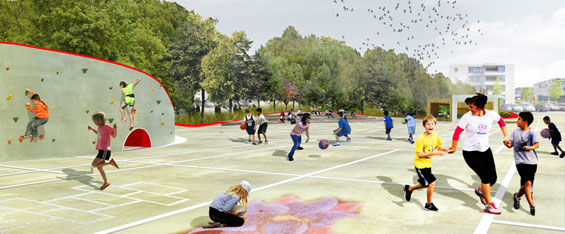
Into the Wild is a playground design by dmau and Openfabric which recently won the Dutch sustainable playground design competition organised by the Richard Krajicek Foundation and Architectuur Lokaal. The design is located in a modernist post-war neighbourhood in Leiden. The competition asked for ideas of how to incorporate sustainable thinking into the design of sports playgrounds.
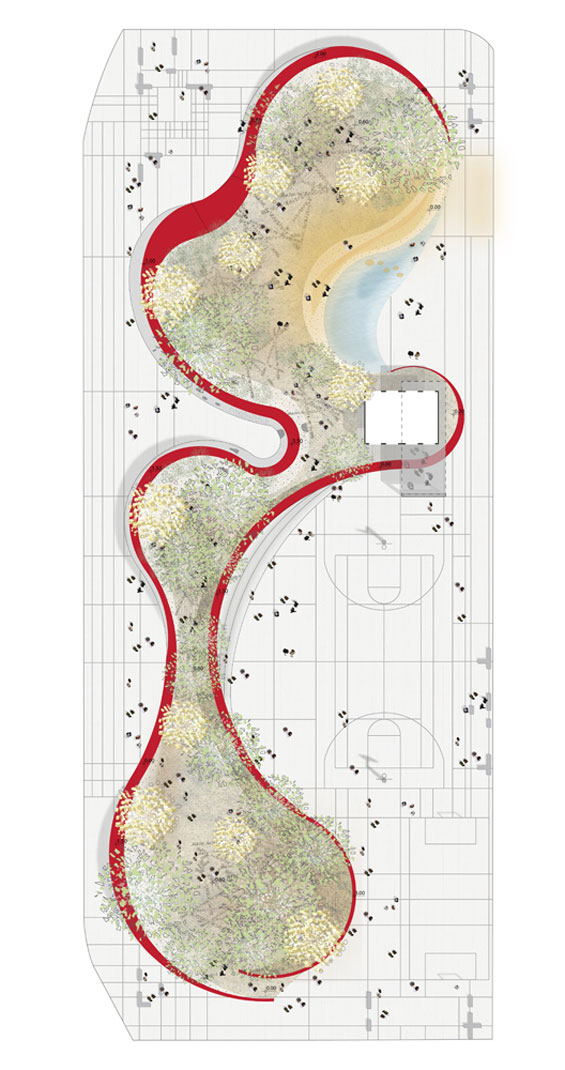
In response to this the design concept juxtaposes a man-made exterior with a wild natural interior. Each place creates an environment for a different type of play, the formal exterior is a place for sports and structured games; tennis, basketball, 5-a-side football, 60m sprint and the long jump. While in the wild interior children are encouraged and free to construct and destruct their own play spaces amongst the trees using natural materials such as fast growing willow. A small pavilion sits in-between the two worlds and will act as a storage space for sports and building materials. A neighbourhood sports leader will supervise the pavilion and materials.
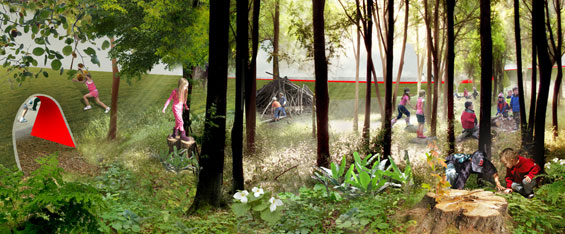
A boundary “ribbon” separates the two worlds, the “ribbon” becomes a play landscape incorporating traditional playground elements into its undulating and curvilinear form. This form references traditional romantic landscape park and garden design in The Netherlands, it protects the internal wilderness and creates a number of unique playscapes that link the different worlds; a climbing canyon, a hill with tunnels and slides, a pond with a beach, a curved seating stand facing the main sports area. This is the place where children learn through play to navigate between the different worlds. A balanced relationship between the man made and natural worlds is the essence of sustainability and forming an understanding of this dialogue through participatory play and creative interaction is an essential childhood experience currently missing in many urban areas.

Design development diagrams(above):
1. We consolidate the green to create an interior island of wilderness planted with mature trees and pioneer species the space is left to grow and develop naturally.
2. The exterior is a uniform playing surface for more formal games and sports. The materialisation of the surface will enhance the contrast between the exterior and interior.
3. The shape of the green island is adjusted to accommodate different sports and create spatial variety in the interior.
4. The boundary “ribbon” is transformed to incorporate traditional playground elements; swings, slides, tunnels, climbing walls, water and ramps, these offer different ways to navigate between the two worlds.
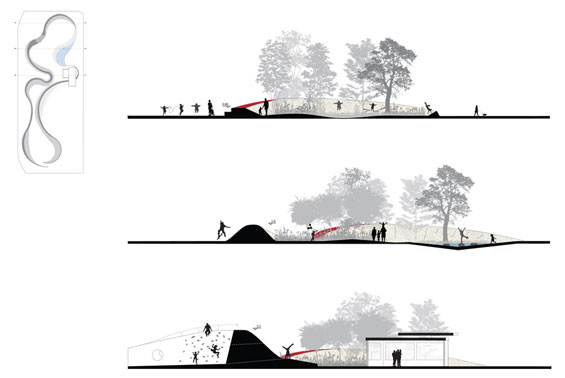

Into the Wild | Leiden The Netherlands | dmau and Openfabric
Landscape Architects | dmau + Openfabric
Project team: Daryl Mulvihill, Francesco Garofalo, Barbara Costantino
Client| Richard Krajicek Foundation
Area: 4,650 m2
Budget: 450,000EUR
Design year 2012 – ongoing
IMAGE & TEXT CREDIT | dmau and Openfabric


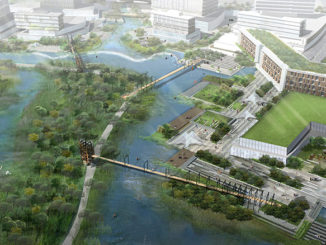
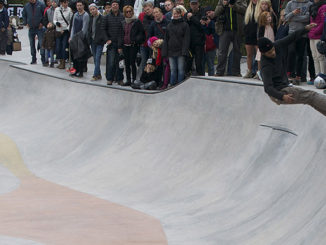
Comments are closed.